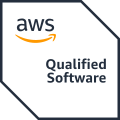Here are key elements to consider when formulating a strategy for strategic workforce planning:
1. Alignment with Business Strategy: Start by understanding the organization's overall strategic goals and objectives. Identify the workforce capabilities and competencies needed to achieve those goals. Ensure that the strategic workforce plan is aligned with the broader business strategy, enabling the organization to meet its future workforce needs effectively.
2. Environmental Analysis: Conduct a thorough analysis of the internal and external factors that can impact the organization's workforce. Consider industry trends, technological advancements, demographic shifts, regulatory changes, and emerging skills requirements. Understand the labor market conditions and the availability of talent with the desired skills.
3. Workforce Segmentation: Segment the workforce based on critical roles, skill sets, and potential future needs. Identify key positions and critical skills that are vital to the organization's success. Categorize employees based on performance, potential, and readiness for future roles. This segmentation helps prioritize workforce planning efforts and focus on areas that require immediate attention.
4. Talent Forecasting and Gap Analysis: Use data-driven approaches to forecast the future demand and supply of talent. Analyze historical data, industry benchmarks, and market insights to project workforce requirements. Conduct a gap analysis to identify the disparities between the projected demand and the existing talent pool. This analysis helps determine the areas where talent acquisition, development, or retention efforts are necessary.
5. Talent Acquisition and Recruitment Strategies: Develop strategies to attract and acquire the right talent. This may include implementing targeted recruitment campaigns, leveraging social media and professional networks, partnering with educational institutions, and creating an attractive employer brand. Focus on building diverse talent pipelines and utilizing innovative recruitment methods to ensure a robust talent pool.
6. Talent Development and Succession Planning: Invest in talent development initiatives to ensure a skilled and capable workforce. Provide training programs, mentorship, and career development opportunities to enhance employees' skills and prepare them for future roles. Implement succession planning to identify high-potential employees and groom them for key positions within the organization.
7. Retention and Engagement Strategies: Develop strategies to retain top talent and foster employee engagement. This can include creating a positive work culture, offering competitive compensation and benefits, providing growth opportunities, and recognizing and rewarding high performance. Regularly assess employee satisfaction and take steps to address any issues that may impact retention.
8. Data Analytics and Technology Enablement: Leverage workforce analytics tools and technology platforms like TeamForm to gather workforce data, track key metrics, and generate insights. Use predictive analytics to anticipate future talent needs and optimize workforce planning strategies. Implement integrated HR systems to streamline processes, improve data accuracy, and facilitate decision-making.
9. Monitoring, Evaluation, and Adaptation: Continuously monitor and evaluate the effectiveness of the strategic workforce plan. Establish key performance indicators (KPIs) to measure progress and outcomes. Solicit feedback from employees and managers to identify areas for improvement. Adapt the workforce plan as needed to align with evolving business requirements and market dynamics.
By formulating a strategy for strategic workforce planning, organisations can ensure they have the right talent in the right positions to drive business success, navigate uncertainties, and respond effectively to changing market conditions.
Let us know what you think? Thoughts?





.png)









